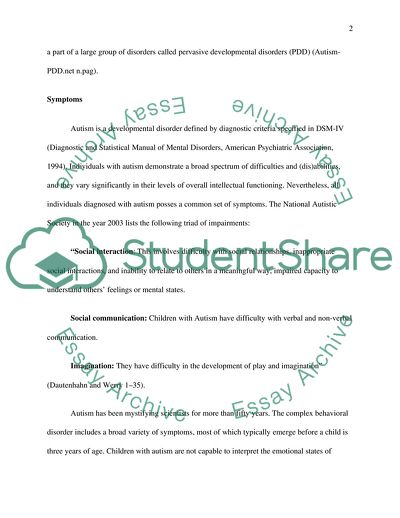Cite this document
(Students with Autism Spectrum Disorders Essay Example | Topics and Well Written Essays - 1500 words, n.d.)
Students with Autism Spectrum Disorders Essay Example | Topics and Well Written Essays - 1500 words. https://studentshare.org/health-sciences-medicine/1712314-students-with-autism-spectrum-disorders
Students with Autism Spectrum Disorders Essay Example | Topics and Well Written Essays - 1500 words. https://studentshare.org/health-sciences-medicine/1712314-students-with-autism-spectrum-disorders
(Students With Autism Spectrum Disorders Essay Example | Topics and Well Written Essays - 1500 Words)
Students With Autism Spectrum Disorders Essay Example | Topics and Well Written Essays - 1500 Words. https://studentshare.org/health-sciences-medicine/1712314-students-with-autism-spectrum-disorders.
Students With Autism Spectrum Disorders Essay Example | Topics and Well Written Essays - 1500 Words. https://studentshare.org/health-sciences-medicine/1712314-students-with-autism-spectrum-disorders.
“Students With Autism Spectrum Disorders Essay Example | Topics and Well Written Essays - 1500 Words”. https://studentshare.org/health-sciences-medicine/1712314-students-with-autism-spectrum-disorders.


